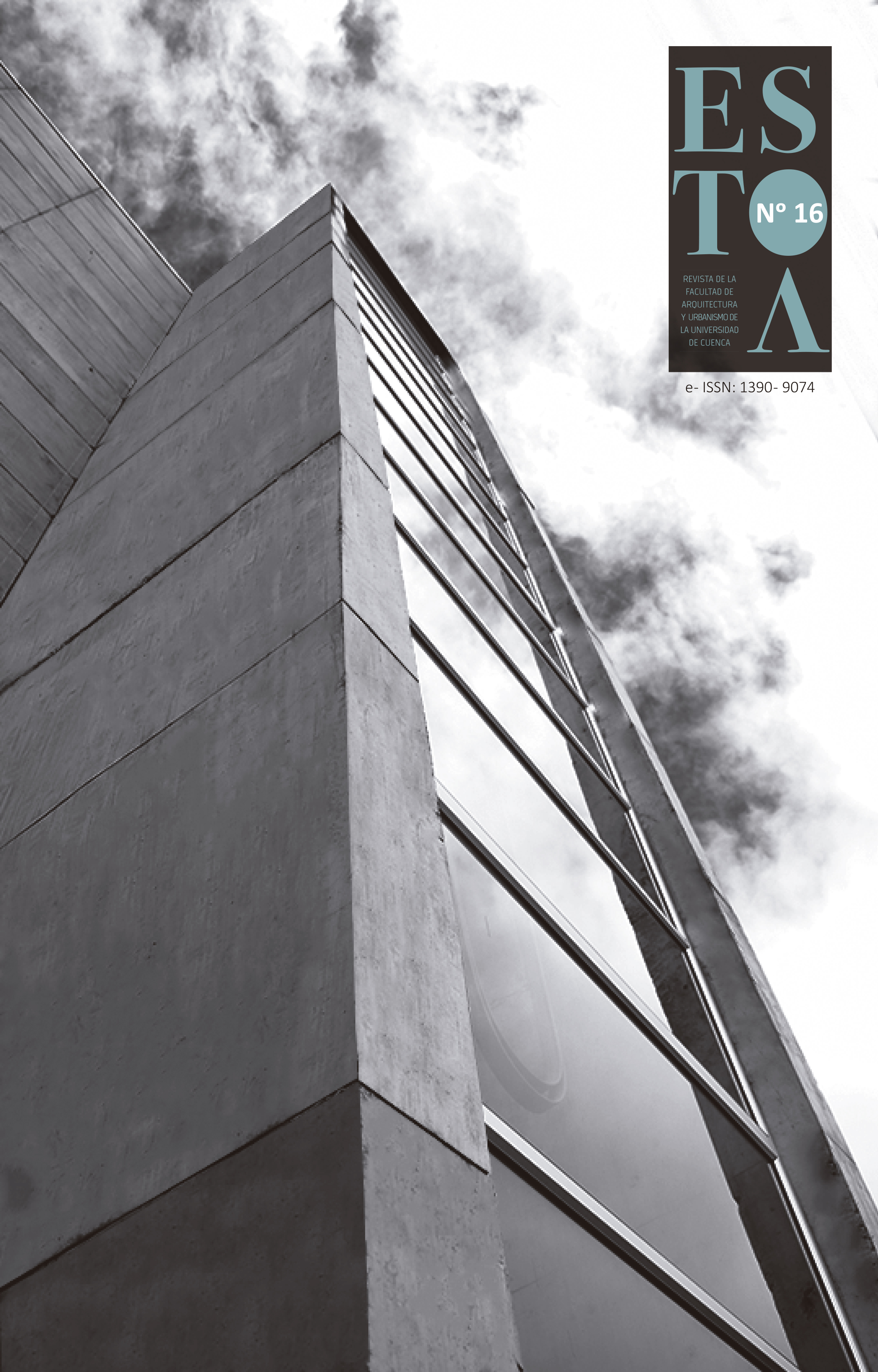Visionary architecture:
the drawn utopia
DOI:
https://doi.org/10.18537/est.v008.n016.a05Keywords:
Architecture, utopia, drawing, imagination, idea, conceptionAbstract
During the Age of Reason, Boullée already criticized the Vitruvian vision of seeing architecture as the art of building. For him there was a previous step: before constructing it is necessary to conceive. The architectural creation is the consequence of a poetic or projectual criticism. Thus, the goal of criticism is always the proposal of new ideas. In this way the discipline evolves. Ideas are represented through utopia, and it is which change the world, not the limited and dogmatic reality. Let’s look at the “Disparates” of Goya, or the essential non-figurative reality that Cubist artists wanted to convey to us. The drawing is a means to express very suggestive ideas that can take to the architecture to a more propitious philosophical and theoretical state. Examples of this were Piranesi with his “Prisons”, Boullée with his “Newton’s Cenotaph “, Sant’Elia with his “Città Nuova”, Chernikov with his “Architectural fantasies”. Without forgetting Taut, Archigram or Woods. They are all great visionaries who did not need to build to give great contributions to architecture. They needed to conceive and their medium was drawing. A drawing can explain a whole philosophy of thought in very few strokes
Downloads
References
Aristóteles. (2007). Arte Poética (4ta ed.). México DF, México: Porrúa.
Beardsley, M., y Hospers, J. (1997). Estética: historia y fundamentos. Madrid, España: Cátedra.
Benavides, J. (2015). Laberinto del Minotauro. Quito, Ecuador: Archivo personal.
Boullée, E. L. (1985). Arquitectura: Ensayo sobre el arte. (C. Sambricio, Ed.) Barcelona, España:Gustavo Gili.
Chernikov, I. (1927). Iskustvo nachertaniya. Leningrado. (pp. 21—22). En Khmelnitsky, D. (2013). Yakov Chernikhov: Architectural Fantasies in Russian Constructivism (p. 8). Berlín, Alemania: DOM Publishers.
Chernikov, I. (1930). Osnovy sovremenoi arkhitektury. Leningrado. (p. 16). En Khmelnitsky, D. (2013). Yakov Chernikhov: Architectural Fantasies in Russian Constructivism (p. 10). Berlín, Alemania: DOM Publishers.
Cook, P. (1999). Archigram. Nueva York, Estados Unidos: Princeton Architectural Press.
Cooke, C. (1984). Fantasy and Construction: Iakov Chernikhov’s Approach to Architectural Design. Londres, Reino Unido: Architectural Design.
Corominas, J. (1987). Breve Diccionario Etimológico de la Lengua Castellana. Madrid, España: Gredos.
Ficacci, L. (1999). Giovanni Batista Piranesi: the Complete Etchings. Los Ángeles, Estados Unidos: Klotz Series. Taschen America, LLC.
Gozak, A., y Leonidov, A. (1988). Ivan Leonidov: The Complete Works. Nueva York, Estados Unidos: Rizzoli.
Hesse, H. (2005). Lecturas para minutos 1. (A. S. Pobes, y M. Olasagasti Gaztelumendi, Trads.) Madrid, España: Alianza.
Jan-Magomédov, S. O. (2015). Gueorgui Krútikov. Kahn, L. (2003). Escritos, conferencias y entrevistas. (A. Latour, Ed.) Madrid, España: El Croquis.
Khmelnitsky, D. (2013). Yakov Chernikhov: Architectural Fantasies in Russian Constructivism (Primera ed.). Berlín, Alemania: DOM Publishers.
Miranda, A. (1999). Ni robot ni bufón. Madrid, España: Ediciones Cátedra.
Miranda, A. (2008). Columnas para la resistencia. Madrid, España: Mairea Libros.
Miranda, A. (2011). A todos los becarios de la reina: ocho ensayos de estética civil. Madrid, España: Biblioteca Nueva.
Moro, T. (2003). Utopía. (R. Zoppi, Ed.) Buenos Aires, Argentina: Losada.
Taut, B. (1997). Escritos Expresionistas. Escritos, 19191920. (I. Ábalos, Ed., y M. D. Ábalos, Trad.) Madrid, España: El Croquis.
Woods, L. (1993). War and Architecture. Pamphlet Architecture 15. Nueva York, Estados Unidos: Princeton Architectural Press.
Woods, L. (2001). Radical Reconstruction. Nueva York, Estados Unidos: Princeton Architectural Press.
Woods, L. (2015). Slow Manifesto: Lebbeus Woods Blog. (C. Jacobson, Ed.) Nueva York, Estados Unidos: Princeton Architectural Press.
Published
How to Cite
Issue
Section
License
The Journal declines any responsibility for possible conflicts derived from the authorship of the works that are published in it.
The University of Cuenca in Ecuador conserves the patrimonial rights (copyright) of the published works and will favor the reuse of the same ones, these can be: copy, use, diffuse, transmit and expose publicly.
Unless otherwise indicated, all contents of the electronic edition are distributed under a Creative Commons Attribution-NonCommercial-ShareAlike 4.0 International License.




